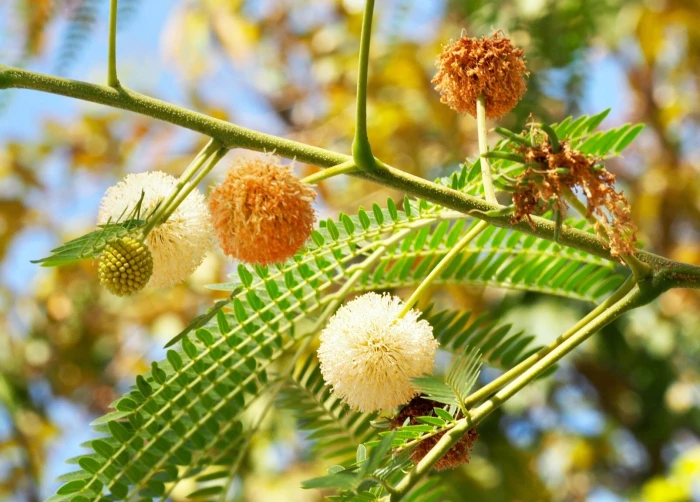White Leadtree
(Leucaena leucocephala)
White Leadtree (Leucaena leucocephala)
/
/

Nguyễn Văn Hùng
CC BY 4.0
Image By:
Nguyễn Văn Hùng
Recorded By:
Copyright:
CC BY 4.0
Copyright Notice:
Photo by: Nguyễn Văn Hùng | License Type: CC BY 4.0 | License URL: http://creativecommons.org/licenses/by/4.0/ | Rights Holder: Nguyễn Văn Hùng | Publisher: iNaturalist | Date Created: 2019-10-18T03:02:50Z |
























Estimated Native Range
Climate Requirements for Avon Lake, Ohio
| This Plant | Your Site | Plant Suitability for Your Location | ||
|---|---|---|---|---|
| • Precipitation | Unknown" - 208" | 36" | Aquatic | Aquatic |
| • High Temp. | 56°F - 116°F | 83°F | Your summer temperatures are normal for this plant. | Excellent |
| • Low Temp. | -12°F - 79°F | 19°F | Your winter temperatures are normal for this plant | Excellent |
This plant should grow well at your location with about N inches per year (Y minutes per month) of irrigation.
Summary
Leucaena leucocephala, commonly known as White Leadtree, is a fast-growing, semi-evergreen tree native to open woodlands and disturbed areas in southern Mexico and northern Central America. It has been widely naturalized in tropical regions around the world. This species typically reaches heights of 16-49 feet (5-15 meters) with a similar spread, and it features a rounded canopy. The bipinnate leaves are bright green, and the tree produces showy, white, spherical flower heads that bloom intermittently throughout the year, followed by flat, brown seed pods.
White Leadtree is valued for its rapid growth and its ability to improve soil fertility through nitrogen fixation. It is used in agroforestry systems for fodder, firewood, and green manure. The tree is also planted for erosion control and as a shade tree in coffee and cocoa plantations. It requires full sun to part shade, tolerates a range of soil types, and is drought-resistant once established. However, it can be invasive outside its native range, and its seeds are dispersed by wind and water, which contributes to its spread. The presence of mimosine, a toxic amino acid, can cause hair loss and other issues in non-ruminant animals if ingested.CC BY-SA 4.0
White Leadtree is valued for its rapid growth and its ability to improve soil fertility through nitrogen fixation. It is used in agroforestry systems for fodder, firewood, and green manure. The tree is also planted for erosion control and as a shade tree in coffee and cocoa plantations. It requires full sun to part shade, tolerates a range of soil types, and is drought-resistant once established. However, it can be invasive outside its native range, and its seeds are dispersed by wind and water, which contributes to its spread. The presence of mimosine, a toxic amino acid, can cause hair loss and other issues in non-ruminant animals if ingested.CC BY-SA 4.0
Plant Description
- Plant Type: Shrub, Tree
- Height: 6.5-26 feet
- Width: 9.75-16 feet
- Growth Rate: Rapid
- Flower Color: White
- Flowering Season: Spring, Summer, Fall
- Leaf Retention: Evergreen
Growth Requirements
- Sun: Full Sun, Part Shade
- Water: Low, Medium
- Drainage: Fast, Medium, Slow
Common Uses
Drought Tolerant, Erosion Control, Low Maintenance
Natural Habitat
Open woodlands and disturbed areas in southern Mexico and northern Central America
Other Names
Common Names: River Tamarind, Acacia Palida, Aroma Blanca, Balori, Bo Chet, Cassie, Jumbay, Cassis
Scientific Names: Leucaena leucocephala, Acacia glauca, Acacia leucocephala, Acacia leucocephala, Leucaena glabra, Leucaena leucocephala, Mimosa leucocephala, Mimosa leucophala
GBIF Accepted Name: Leucaena leucocephala